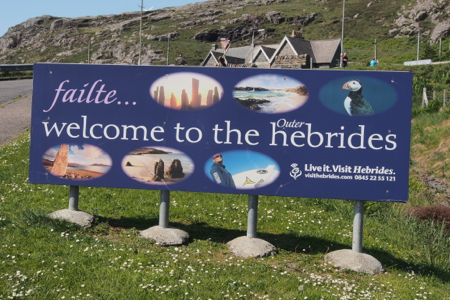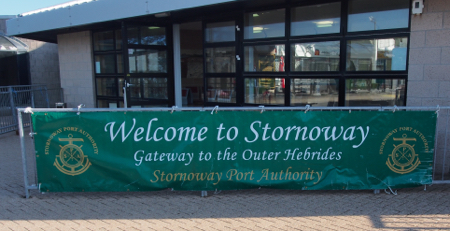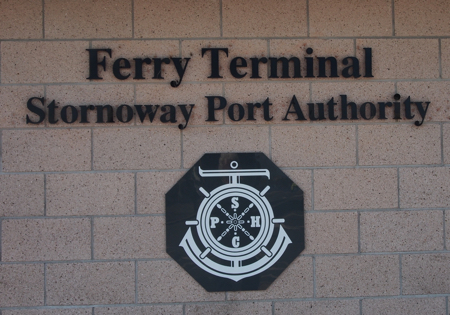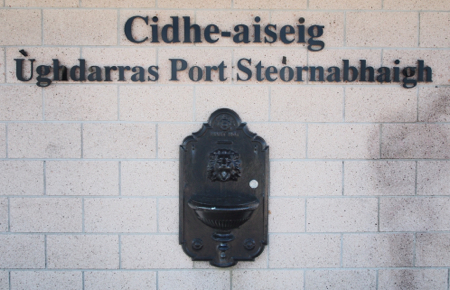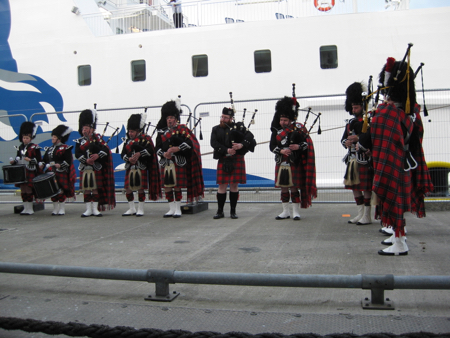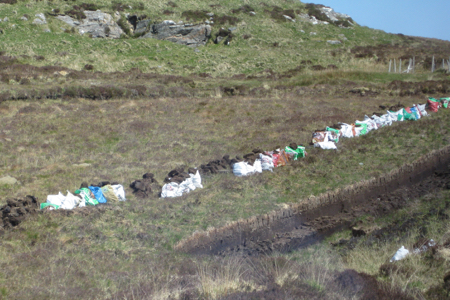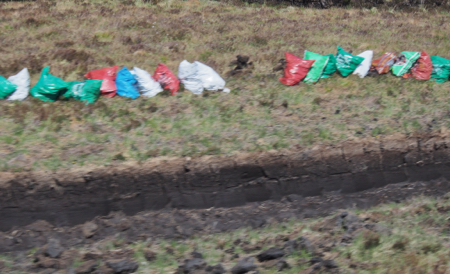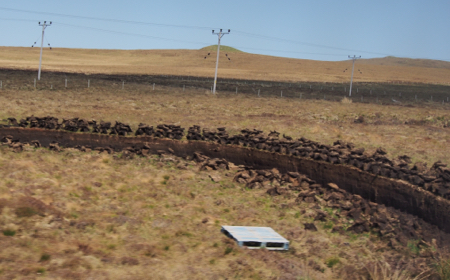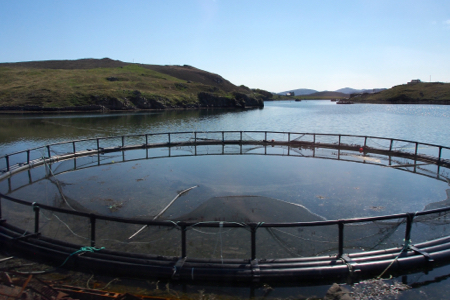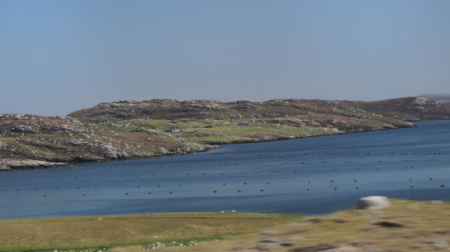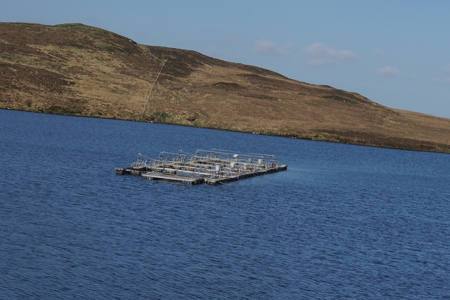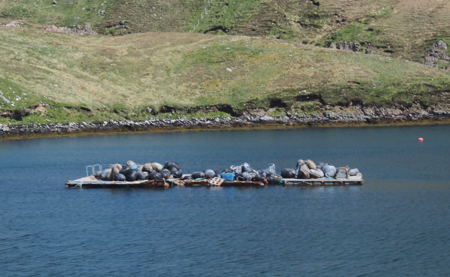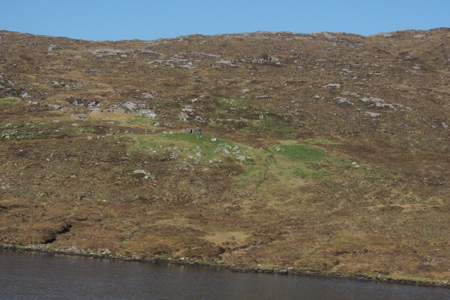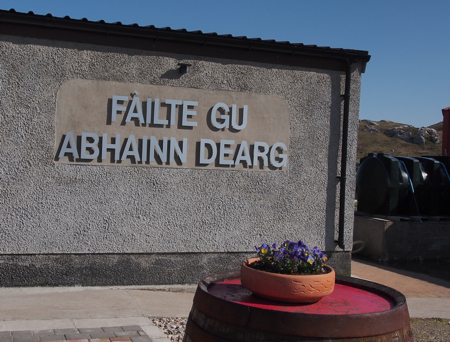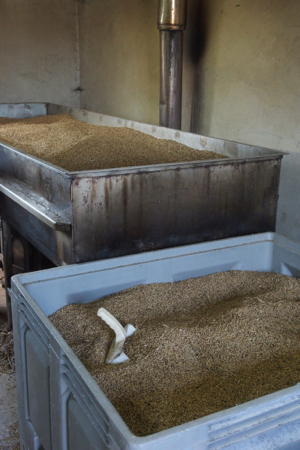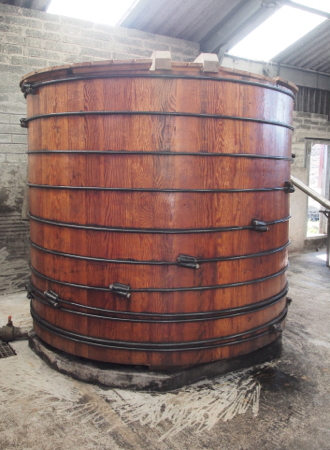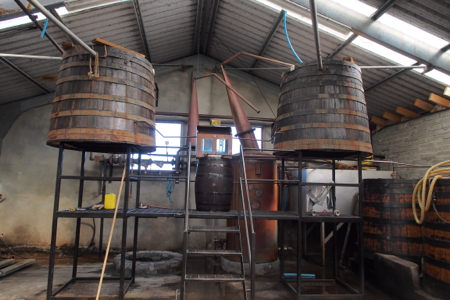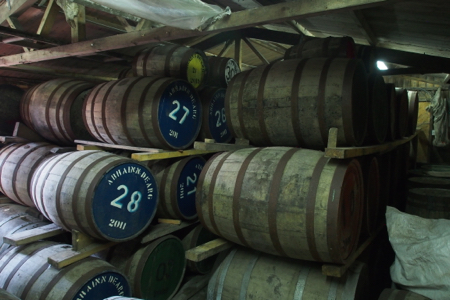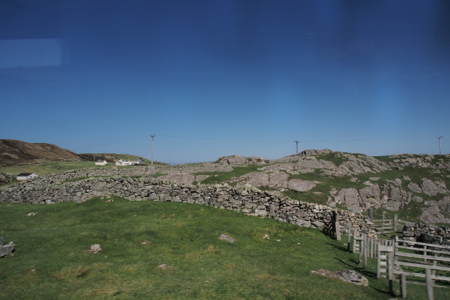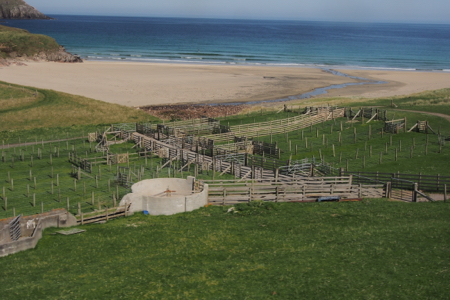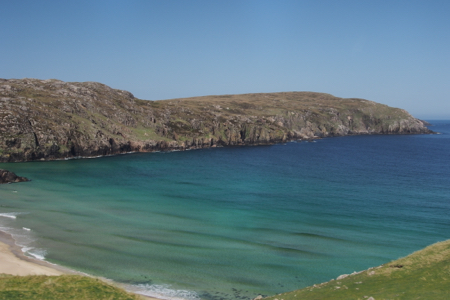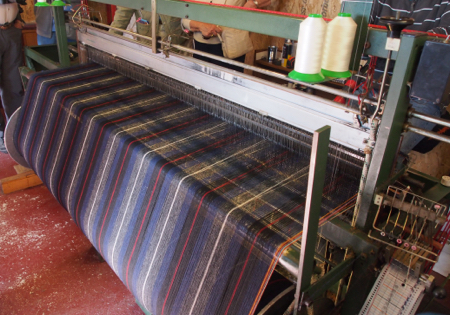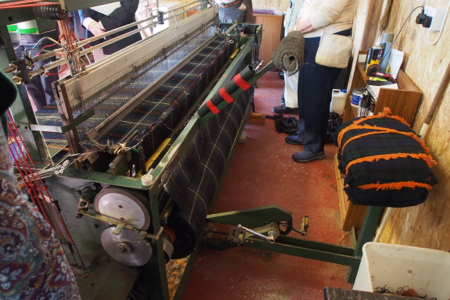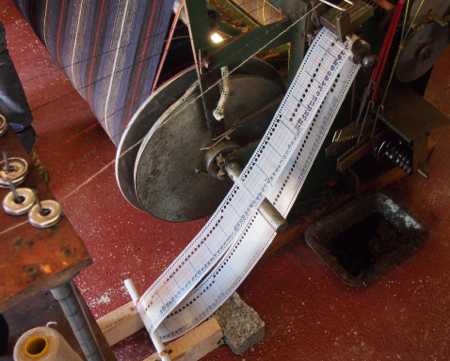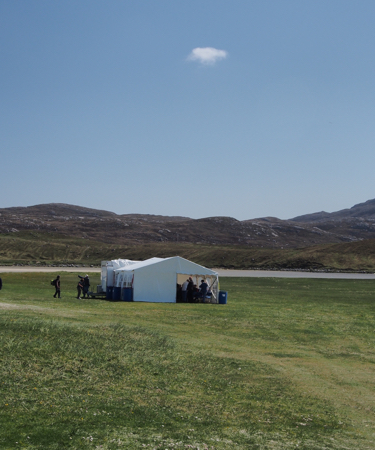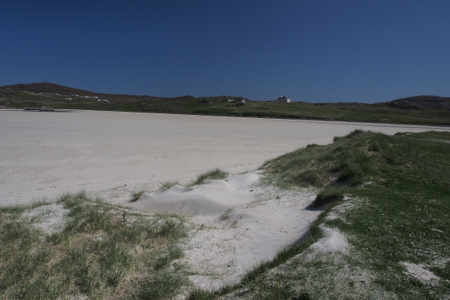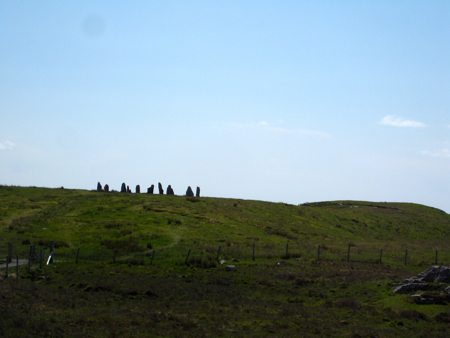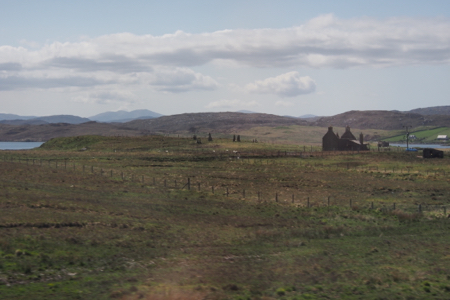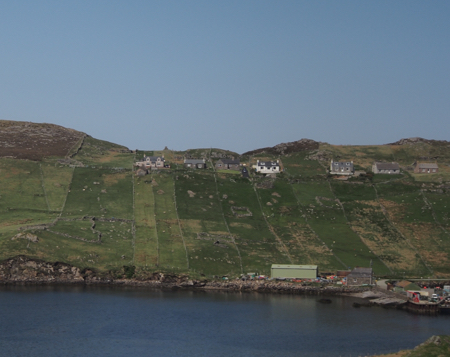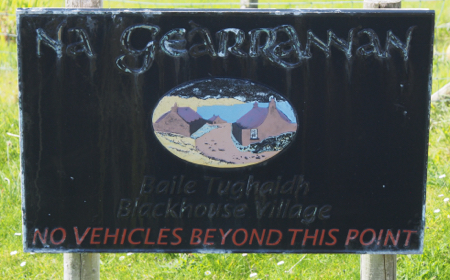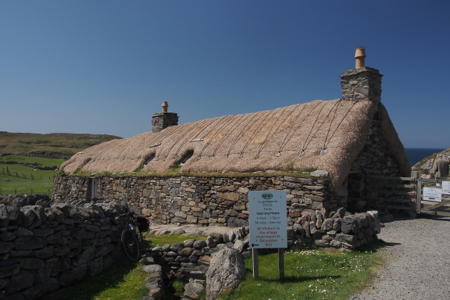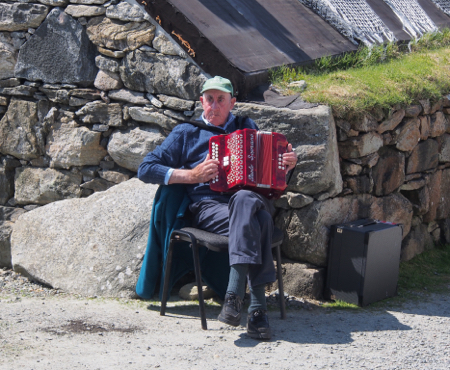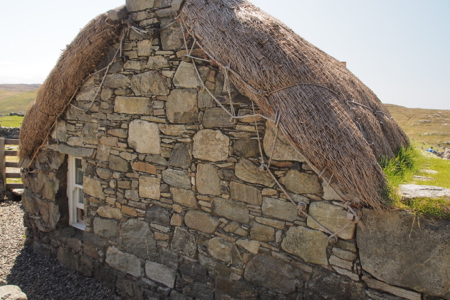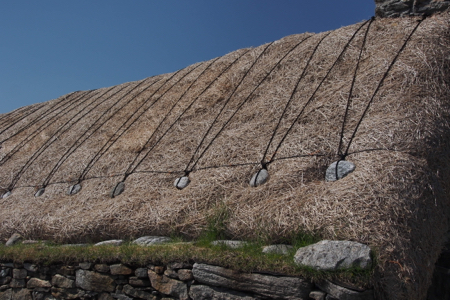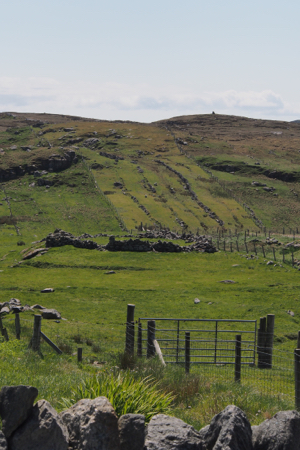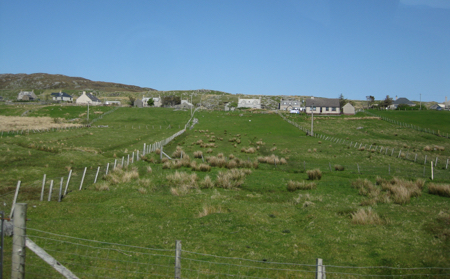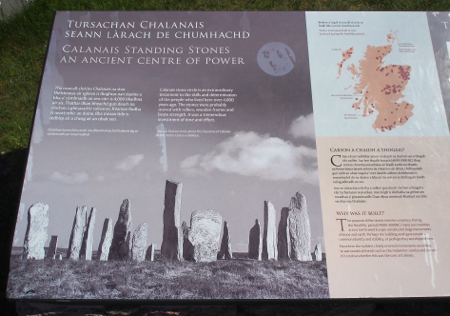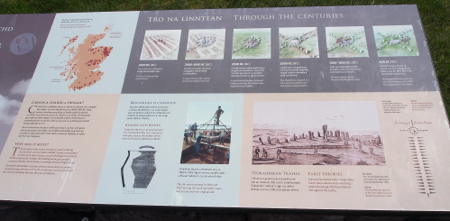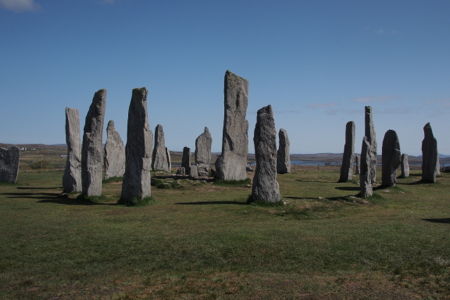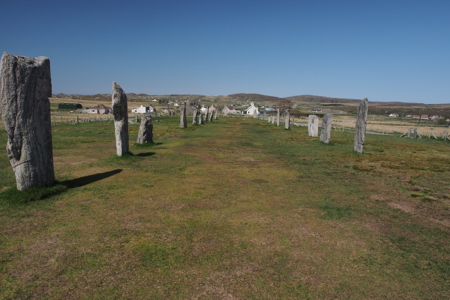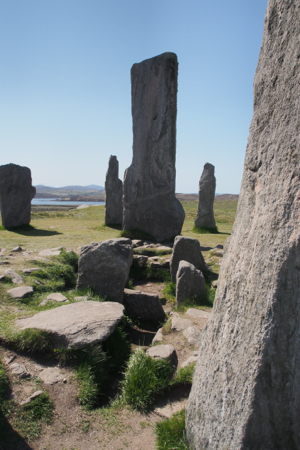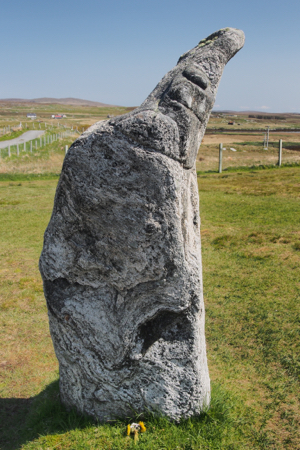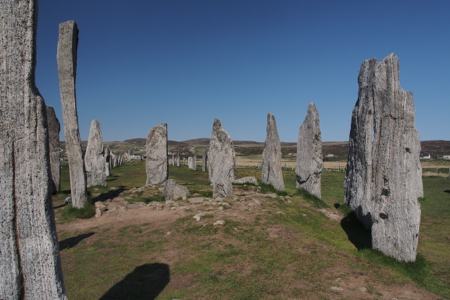Fri., 5/27/16 – Stornoway on the Isle of Lewis in the Outer Hebrides, Scotland
Stornoway is on the Isle of Lewis of the Outer Hebrides. Although it gets 6.8 feet of rain a year, it was a cloudless, blue sky, and 65° day for us today. This island has been inhabited since 7,000 BCE. As we drove around the island we saw several people cutting peat from the inland bogs. For 10 British pounds annually a resident can cut and dry peat for heating their house and be less dependant on oil and gas. We also passed by several salmon and mussel fisheries in the inland lochs and inlets.
In Gaelic
Greeting our arrival
Peat harvesting
Peat harvesting
Peat harvesting
Salmon farm
Mussel farm
Mussel farm
We started with a visit to the Faille gu Abhainn Dearg (or Red River Distillery) Scotch whiskey distillery at 9:30 this morning. It is the first new, legal distillery in the northern Hebrides in 200 years! In 2008 the owner began the whisky making process. Local barley is soaked, turned until it germinates, smoked using peat, dried again, then milled into griss. All of this takes one week. The mash is mixed with Red River water, washed, and put into vats with yeast to ferment. It then goes through a copper still and the vapor is allowed to condense into a cooling vat. It goes through a spirit distillation and what is 66% alcohol is put into oak casks to age. Anything more or less than 66% goes back to repeat the still and condensation process. This process takes another week. This micro-distillery puts out the equivalent of 10,000 bottles per year. The original casks from 2008 can be bottled as “spirits” but can’t be called whiskey until it ages 3 years, but since 10 years of aging is best, the 2008 crop won’t be bottled until 2018.
A Scottish moor
Distillery for Scotch Whiskey
Barley
Fermenting vat
Aging
Next stop was at the home of a weaver of Harris Tweed, Collon Buchanon. To be called a Harris Tweed the wool must be hand spun, dried, and woven only in the Outer Hebrides. We watched Collon pedal his loom and create a tartan plaid. The machine is old and expensive (12,000£ used or 22,000£ new). It requires good eyesight and a talented mechanic to keep the machine working properly and to catch any broken thread, etc.
Farm and dry-stone wall
Stock pens
Beautiful bay
Harris Tweed
Harris Tweed
Next in this busy day was lunch served by the local community center in a tent at Camas Uig (Uig Bay). Each plastic lunch box had smoked salmon and cheese with local chutney sandwiches and three kinds of dessert. Then we walked down to the great white sand beach and a local told us about the story of the Lewis chessmen. Supposedly a cow got a leg caught in a hole on this beach and when the farmer got the cow free, he found a cache (hidden treasure) of 78 chess pieces made from ivory or whale bone. There were four complete chess sets in a container buried in the sand. Some of the chessmen are exhibited in the British Museum (which we see on the next Tour). (Link 2)
Lunch at the Camas Uig (Uig Bay)
Camas Uig
The countryside is dotted with standing stones and other archeological features.
Most of the countryside houses still have crofts, an agriculture strip of land on which to graze a few sheep or cows or to plant with barley or wheat. The size of a single house’s croft ranges from 4 to 10 acres. (Link 2)
Standing stones in the distance
Croft farming in Scotland
Our next stop was at the Gearrannan Blockhouse Village. We squeezed into one of the stone and thatch roof houses that were lived in until 1974. These simple houses had the stable attached to the living space. The village was restored between 1991 and 2001.
Gearrannan Blockhouse Village
Local entertainment
Gearrannan Blockhouse Village
Gearrannan Blockhouse Village
A croft farm
Our last stop was at the Calanais Standing Stones. This is another Neolithic stone circle but this one has a burial cairn, a standing stone approach to the circle, and three extensions making it look like a Celtic cross from above. It is estimated to have been built between 4,000 and 2,000 BCE. Some of the huge stones have enclosures. 1 ½ meters of peat were removed in 1857 and that exposed the tops of the stones and it was completely excavated in 1980-81.
Calanais Standing Stones
Calanais Standing Stones
Calanais Standing Stones
Calanais Standing Stones
Calanais Standing Stones
Calanais Standing Stones
Calanais Standing Stones
An interesting sign - thankfully translated
Back on board the ship we were entertained by nine school girls and a piper doing several highland dances. It is nice that dance is taught to kids to maintain the Scottish customs.
| Return to Top | Return to Itinerary | Return to Trips page to view other trips | Return to Dreamcatcher Home Page |
